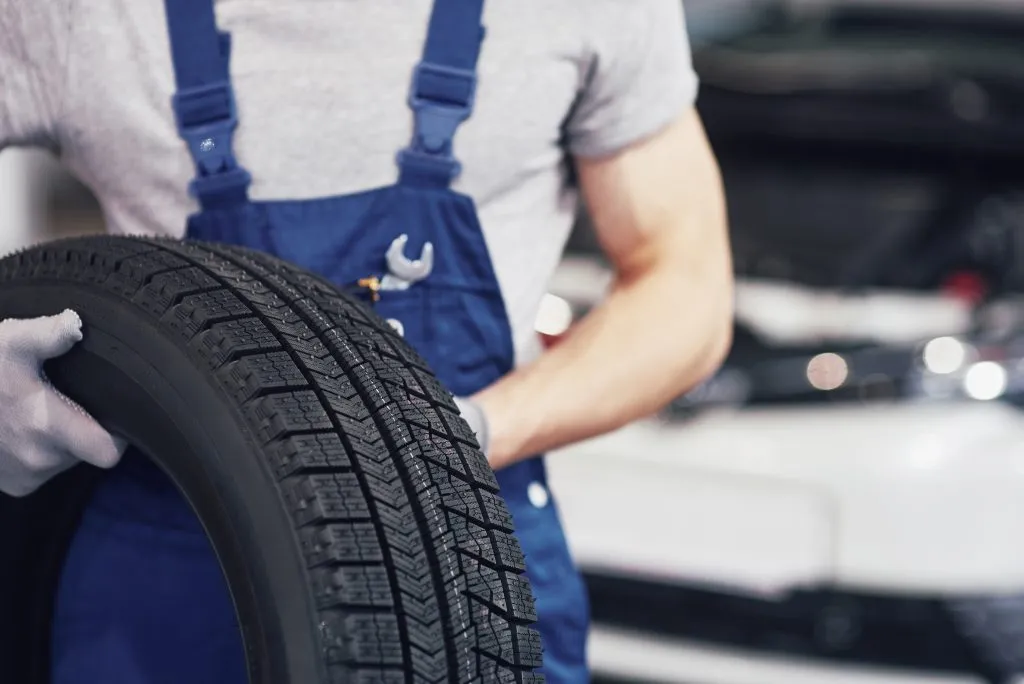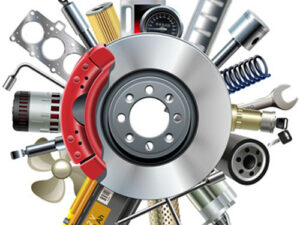Seamless Solutions: Your Go-To Tire Repair Shop Guide
Discover essential tips for choosing the right tire repair shop and keeping your tires in top shape!

Introduction to Tire Repair Shops
Knowing what tire repair shops do helps keep your car rolling safely. They handle all sorts of tire troubles, making sure you’re cruising smoothly and worry-free.
Importance of Timely Tire Repairs
Fixing tire issues fast is a big deal for keeping your car safe and running well. Letting small problems slide can lead to big headaches like tires popping off or wasting gas. Taking quick action on damage keeps tires going longer and car performance up to par. Here’s a quick look at why fixing tires sooner rather than later is smart:
| Tire Issue | Possible Consequences | Estimated Repair Cost |
|---|---|---|
| Punctures | Blowout, loss of control | $10 – $30 |
| Sidewall damage | Reduced tire life, safety risks | $25 – $100 |
| Uneven wear | Poor handling, increased wear | $20 – $50 for alignment |
What to Expect from a Tire Repair Shop
Hitting up a tire repair shop? You’ll get a real thorough look-over of your tires. The pros there will check for any damage, make sure the treads are good, and see if the air pressure’s right. Here’s what they usually do for you:
| Service Offered | Description |
|---|---|
| Tire Inspection | Checking out tire condition and how deep the treads go |
| Patching/Plugging | Fixing holes or little nicks |
| Tire Rotation | Switching tire positions to make them wear evenly |
| Balancing | Making sure the weight’s spread out just right |
| Alignment | Tweaking wheel angles so the car handles smooth |
A good tire shop will give you the lowdown on your tires and suggest any needed fixes. Listening to their advice helps you keep your car in top shape for the long haul.
Signs That You Need Tire Repair
Knowing your tires need attention can keep your wheels rolling safely and smoothly. Don’t wait until you’re stuck on the side of the road to realize there was a problem!
Recognizing Common Tire Issues
Taking care of your trusty ride means checking out those tires regularly. Here’s what to keep an eye on:
| Tire Issue | Description |
|---|---|
| Uneven Wear | If one side’s wearing out faster, you’ll feel that imbalance when driving. |
| Bulges or Blisters | These lumps are bad news—think potential blowout waiting to happen. |
| Cracks or Cuts | Those unsightly marks might mean your tire’s about to call it quits. |
| Vibration or Noise | Feeling like your ride’s got a case of the bouncies or noisy? Could be tire trouble. |
| Low Pressure | Tires looking a bit flat? Constant low pressure needs checking out. |
When to Seek Professional Help
Let’s be honest, some things are better left to the experts. Notice any of these signals? Time to head to the pros:
| Situation | Recommended Action |
|---|---|
| Tire Pressure Warning Light | That dashboard light isn’t just for show—get it checked pronto. |
| Sudden Changes in Handling | If it suddenly feels like you’re driving a different car, better pop by the tire shop. |
| Frequent Loss of Air Pressure | Topping up air more than gas? You’ve probably got a leak. |
| Long Trips Planned | Planning a road trip? Have a tire pro give your ride a once over first. |
Spotting problems early and knowing when to call in the tire warriors keeps your journey smooth. Happy driving!
Services Offered by Tire Repair Shops
Tire repair shops dish out a bunch of services aimed at keeping your tires in tip-top shape. Knowing what they offer helps you stay on top of your car’s maintenance game.
Patching and Plugging Services
Got a pesky puncture? Patching and plugging might save the day. Different strokes for different spots and sizes, here’s how it breaks down:
| Service Type | What’s Involved | Best For |
|---|---|---|
| Patching | Slapping a patch inside the tire to seal the deal. | Holes bigger than 1/4 inch or on the tread. |
| Plugging | Shoots a plug in from outside to stop leaks. | Smaller punctures, under 1/4 inch. |
Both can stretch out your tire’s life, but picking the right fix depends on where and how big that hole is.

Tire Rotation and Balancing
Keep your ride steady with regular tire rotation and balancing.
- Tire Rotation means playing musical chairs with your tires to keep wear even. Swap them around every 5,000 to 7,500 miles for better performance.
| Tire Position | Front Left | Front Right | Rear Left | Rear Right |
|---|---|---|---|---|
| New Position | Rear Left | Rear Right | Front Left | Front Right |
- Tire Balancing sorts out weight distribution around your wheels for a smoother ride without the jitters.
| Balancing Type | Features | Suits Who |
|---|---|---|
| Static | Balances tires while at rest | Good for all-around smoothing. |
| Dynamic | Balances when the tires spin | For high-speed or heavy-duty vehicles. |
Wheel Alignment
For your car to cruise straight and true, proper wheel alignment is your best friend. Misalignment not only chews up tires unevenly but can mess with how your ride handles.
| Alignment Feature | What It Does |
|---|---|
| Camber | Angles tires with the vehicle body. |
| Toe | Points tires in line near vehicle’s center. |
| Caster | Steering axis angle seen from the side. |
Checking alignment every 6,000 miles or if your tires show weird wear patterns or start pulling funny keeps everything driving straight and smooth.
Knowing about these tire services helps you stay on top of things, ensuring your ride stays smooth and as safe as a vault on wheels.
Choosing the Right Tire Repair Shop
Picking the perfect place to patch up your tires isn’t just about keeping your car rolling; it’s about trusting that they’ll do the job right. Here’s what to keep an eye on so you end up in good hands.
Reputation and Reviews
Ever hear the saying, “the proof’s in the pudding?” Well, in this case, it’s in the reviews! Check out what folks are saying on various platforms. It’s like asking a friend for a recommendation but with a bit more reach.
| Review Source | Average Rating |
|---|---|
| Google Reviews | 4.5 stars |
| Yelp | 4.4 stars |
| 4.6 stars |
Look for any repeated praise—or complaints—and weigh what’s really important for you. Timely service and friendly staff often pop up in five-star shops.
Certifications and Experience
Certs matter when it comes to tires. They’re a little like report cards, showing that the person handling your wheels knows their stuff.
| Certification | What’s It Mean For You |
|---|---|
| ASE Certified | Top-notch expertise |
| Tire Industry Association | They dig deep into the nitty-gritty of tires |
| Manufacturers’ Certifications | Knows your tire brand inside out |
Years in the biz count too. Think of grandpa with his toolbox—a shop with experience likely has handled just about any rubber road-bump you might have.
Pricing and Transparency
Nobody likes getting shocked by the bill. Good shops lay it all out there, so ask for the rundown on costs up front.
| Service | Cost Guess-timate |
|---|---|
| Tire Patching | $15 – $25 |
| Tire Plugging | $10 – $20 |
| Tire Rotation | $20 – $50 |
| Wheel Alignment | $75 – $100 |
Snoop around to see what different places charge. Transparency’s key here: you want someone who’ll shoot straight about what needs fixing and why.
Maintenance Tips for Healthy Tires
Keeping your tires in tip-top shape ain’t just for geeks—it’s about keeping you safe and making your ride last longer. Here are some handy tips to make sure your tires keep rollin’ smoothly.
Regular Tire Inspections
Taking a look at your tires every now and then can save you some serious headaches down the road. Try to peek at them at least once a month and maybe even more often as the seasons change up.
| Inspection Aspect | What to Look For |
|---|---|
| Tread Depth | Grab a quarter and pop it in the tread. If George Washington’s head is fully visible, it’s time to say “bye-bye” to your tire. |
| Sidewall Condition | Keep an eye out for any cracks, weird bulges, or signs of trouble brewing. |
| Air Pressure | Make sure the pressure’s up to snuff with what’s in your car’s manual—no one likes a limp tire. |
Proper Tire Inflation
You gotta get the tire pressure just right—not too high, not too low. Getting it wrong screws up handling and messes with your gas mileage. It’s all about balance, like a good cup of coffee.
| Tire Pressure (PSI) | Recommended Inflation |
|---|---|
| Standard Car | 30 – 35 PSI |
| SUV | 32 – 38 PSI |
| Truck | 40 – 50 PSI |
Grab a trusty gauge and give your tires a check-up before they warm up from driving around.
Safe Driving Practices
How you drive can really take a toll on your tires. Adopt some chill driving habits to make ’em last longer and keep you safe on the road.
| Driving Practice | Tips |
|---|---|
| Avoid Rapid Acceleration | Be gentle with the gas. Your tires will thank you for it. |
| Steer Smoothly | Take turns a bit slower to avoid extra wear and tear. |
| Maintain a Safe Following Distance | It gives you more time to stop and takes some pressure off your tires. |
Stick to these tips and your tires will stay happier and healthier, keeping your ride safe and smooth as butter.
DIY Tire Repair vs. Professional Help
Got a tire problem? You’re probably wondering whether to roll up your sleeves and tackle it yourself or let the pros at a tire shop handle it. Each choice comes with its own set of perks and pitfalls.
Benefits of Professional Tire Repair
Going to a tire repair shop has some clear upsides that can boost your ride’s safety and performance. Check out why it might be a smart choice:
| Benefit | Description |
|---|---|
| Know-How | Tire shop folks have the training and knack for fixing all sorts of tire troubles. |
| Top-Notch Fixes | They use high-grade stuff and gear, giving your tire a solid patch-up job. |
| Safety First | Correct repair methods cut down the chance of a tire popping on the road. |
| Peace of Mind | Many times, professional fixes come with a warranty, easing your worries. |
| Quick Turnaround | They get the job done fast, so you can hit the road without much delay. |
Risks of DIY Repair
Doing your own tire repair might seem like a wallet-friendly plan, but keep an eye out for these potential potholes:
| Risk | Description |
|---|---|
| Sloppy Work | Not knowing the know-how can mean bungling the repair, risking a tire mishap. |
| Danger Zone | Bad repairs can result in blowouts or crashes while you’re cruising. |
| Tool Troubles | Lacking the right gadgets can make your fixings flimsy and short-lived. |
| Money Pit | Mess up the DIY and it might end up costing more to fix later. |
| Time Sink | Doing it yourself can drag on, especially if you’re new to the game. |
Before you decide to DIY or swing by a tire shop, weigh these options to keep your tires in top shape and safe for the long haul.
FAQs About Tire Repair Shops
How Long Does a Tire Repair Take?
Alright, you might be thinking, “How long am I stuck waiting at the tire shop?” Well, the wait depends on a few things, like what’s actually wrong with the tire. Here’s a quick peek at what you’re looking at in terms of time:
| Repair Type | Time You’ll Spend Twiddling Thumbs |
|---|---|
| Simple Patching | 30 – 45 mins |
| Plugging | 15 – 30 mins |
| Tire Rotation | 30 – 60 mins |
| Wheel Alignment | 1 – 2 hours |
What Happens if a Tire Cannot be Repaired?
Sometimes a tire’s too far gone. If that’s the case, it’s not the end of the world, but you’ll probably need a new one. Here’s how it breaks down if the worst happens:
| Damage Type | What Happens Next |
|---|---|
| Sidewall Damage | Say hello to a new tire |
| Large Punctures | New tire it is |
| Excessive Wear | Replace ASAP |
| Multiple Patches on One Tire | Time for a fresh tire |
Usually, swapping out the tire is the safest bet and means you won’t have to worry for a good while.
How Often Should I Visit a Tire Repair Shop?
Keep those tires rolling and trouble-free with some regular TLC. Here’s a cheat sheet for when you should swing by the tire shop:
| Service Check | How Often to Drop In |
|---|---|
| Tire Rotation | Every 5,000 – 7,500 miles |
| Tire Alignment | Every 6,000 miles |
| Tire Inspection | Once a month |
| Check Tire Pressure | Monthly |
Sticking to this schedule not only boosts your tires’ life but also keeps you cruising safely on the highways.







